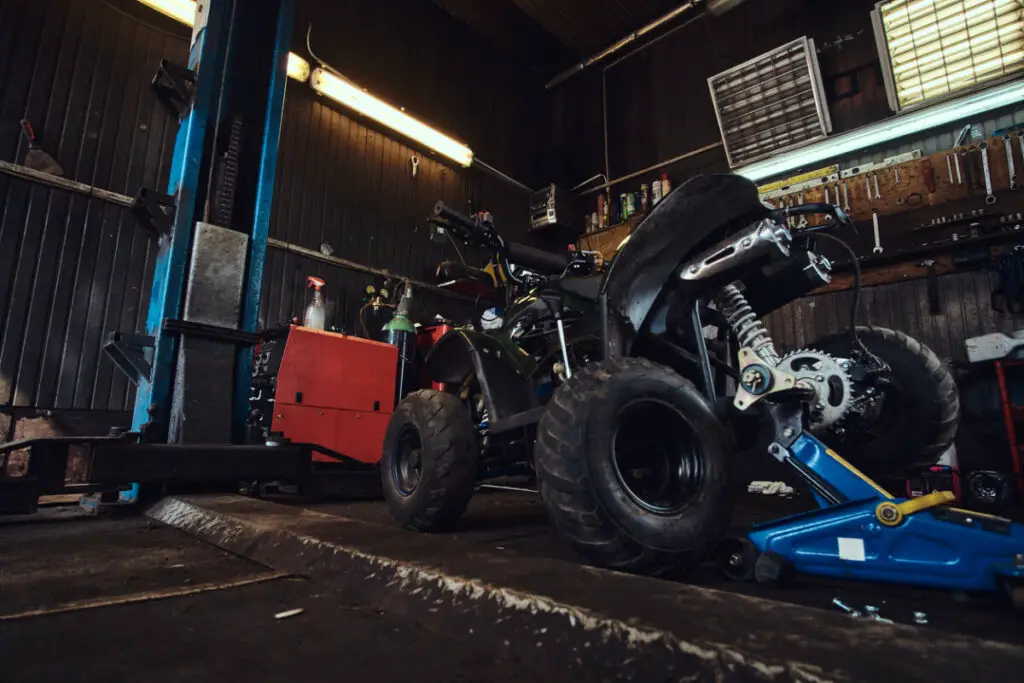
ATVs are vehicles that are designed for power, speed and more power. The design of their engines correlates directly to this. These engines can be measured in CC. You might have heard the term before and if you don’t know what it is, this is the article for you. What is CC? Where does a vehicle’s CC come from? What does CC mean for the vehicle’s performance? Lets answer all of these and better understand what is in the engine of these vehicular beasts.
In an engine, CC measures the total volume of air and fuel being pushed through the engine by the cylinders. CC stands for cubic centimeters as it measures volume. CC affects the ATV in many ways including its power, torque horsepower.
There is a lot that goes into determining how much CC an ATV has and how that will affect its performance. We will cover these topics in more detail in this article. The mechanical physics that go into how CC affects an engine are important to know and also very interesting.
A Closer Look at an Engine
When you research ATVs, are buying an ATV or have an ATV you will notice reoccurring numbers in the name and sometimes displayed on the vehicle. You might hear about a Polaris Sportsman 570 or a Can Am Renegade 1000. These numbers are not just numbers to make it sound like some high tech invention. The numbers refer to the CC.
The CC is a vital statistic that will affect so many aspects of the ATV. To keep it simple, it measures how much energy the engine is producing. The difference between a 300 cc engine and a 800 cc engine is astounding and it all has to do with the physics of how an engine works.
In a four stroke ATV engine there are pistons that are moved up and down by a crankshaft in a cylinder. The distance between when the piston is down versus when it is up is called the stroke. Because This engine is a four stroke, that means the piston takes four up and down motions to complete the cycle.
During the first stroke while the piston is down an intake valve opens letting air from the atmosphere in the cylinder. A small amount of gas is also inserted by an electronic fuel injector. This is called the intake stroke.
In the second stroke the piston moves up and compresses the air, fuel mixture to create a highly combustible mixture. This is called the compression stroke.
In the third stroke the piston is shot down because the spark plug ignites this combustible mixture. This is called the combustion stroke.
In the fourth stroke the piston moves up again to send the burnt air-fuel mixture out the exhaust valve and into the atmosphere. This is called the exhaust stroke. When the piston reaches the top again the process restarts.
It takes one up and down motion or two strokes to revolve the crankshaft once. The amount of times the crankshaft rotates per minute is also called the RPM.
This process can happen dozens of times every second. It depends on the RPM which will relate to how fast the ATV is moving. At some points hundreds of strokes an happen every second.
Here is a helpful animation to display how this process works:
So, what does this have to do with CC? Like I mentioned earlier CC measures the volume of air and fuel being pushed through the cylinder. The CC is actually measuring how much of that air-fuel mixture is being pushed through. A bigger cylinder will mean more air-fuel mixture and therefore more power, RPM, torque, horsepower and other stats. A bigger cylinder will also mean more CC because CC is really just measuring how big the cylinder is.
If you want to learn about CC in relation to the type of ATV check out the articles we wrote on that:
How Much CC You Will find in a Utility ATV
How Much CC You Will Find in a Side by Side ATV
How Much CC You Will Find in a Sport ATV
A Brief Explanation of Finding The CC
Measuring CC uses this formula:
(π/4) x bore diameter squared* x stroke length** x number of cylinders*** = CC
* bore diameter refers to the diameter of the cylinder
**stroke length is how far the piston travels within the cylinder
***number of cylinders is just how many cylinders are in the engine
The Difference Between CC and Horsepower
When hearing about engines in vehicles you will hear the terms CC and horsepower constantly. If they both measure the power the engine can create then what is the difference. As we talked about earlier CC measures the volume in the cylinder and how much of that air-fuel mixture can fit. This has a direct effect on the power on the ATV but CC itself doesn’t actually measure power. Horsepower however directly measures the power. It is a number to represent a relation between the force and speed the vehicle can apply.
To learn more about horsepower check out an article we wrote about that:

